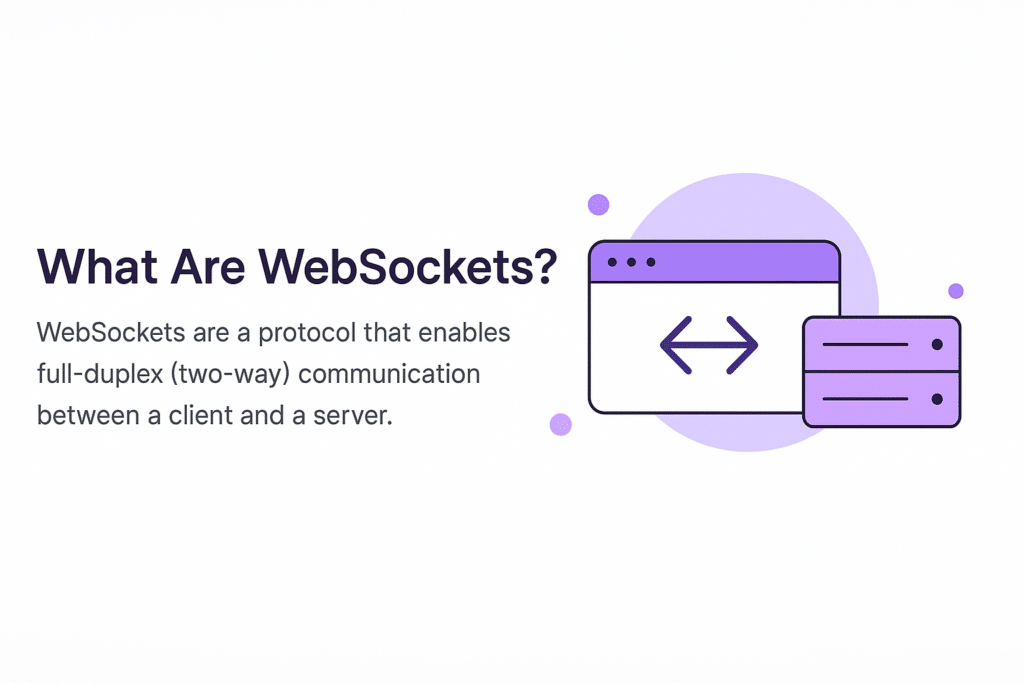Summary
WebSockets are a communication protocol that allows real-time, two-way interaction between a web browser and a server. While powerful for performance and interactivity, they can also be exploited by attackers to bypass traditional security controls—making proper visibility and protection essential for security teams and compliance officers.

What Are WebSockets?
WebSockets are a protocol that enables full-duplex (two-way) communication between a client (typically a web browser) and a server over a single, long-lived connection. Unlike HTTP, which is request-response based, WebSockets allow the server to push data to the client instantly without requiring a new request.
This is ideal for use cases like chat apps, real-time notifications, collaborative tools, live sports updates, and more.
How It Works
Initial Handshake
A WebSocket connection begins with an HTTP request, upgraded via the Upgrade: websocket header.
Persistent Connection
Once established, the connection remains open, allowing either side to send data at any time.
Lightweight Frames
Data is sent in small, efficient packets (frames), reducing overhead compared to HTTP.
JavaScript Controlled
Most WebSocket implementations are controlled via JavaScript on the client side, making them part of the broader client-side attack surface.
Who Does This Concern
- Security Teams: WebSocket connections can bypass traditional network inspection tools.
- Compliance Officers: Sensitive data transmitted over WebSockets can be difficult to monitor for regulatory compliance (e.g., PCI DSS, HIPAA).
- Developers: Improper WebSocket configuration can open the door to session hijacking, data leakage, or injection attacks.
- Enterprises: Organizations using real-time customer-facing applications without client-side security monitoring are vulnerable.
Real-World Examples
- Data Leakage: A financial services firm unknowingly leaked session data through unencrypted WebSocket connections embedded in third-party scripts.
- Malicious Payload Delivery: Attackers used a WebSocket connection to deliver malware-laden code to users without triggering traditional firewalls.
- Credential Harvesting: A gaming platform experienced credential theft due to an insecure WebSocket endpoint exploited via an XSS attack.
How Feroot Helps
Feroot’s Client-Side Security Platform provides full visibility into WebSocket usage and behavior within your web applications. By analyzing JavaScript and network behaviors on the client side, Feroot helps identify suspicious or unauthorized WebSocket activity—before it leads to a breach or compliance violation.
- Protect real-time applications
- Discover hidden WebSocket endpoints
- Ensure PCI DSS, HIPAA, and other regulatory compliance
FAQ
Are WebSockets more secure than HTTP?
Not necessarily. While WebSockets can be encrypted (via wss://), they can also bypass traditional HTTP-based security layers. Proper monitoring is essential.
Can attackers hijack WebSocket sessions?
Yes. Without proper origin checks and secure tokens, attackers can intercept or impersonate WebSocket traffic.
How do WebSockets impact PCI DSS or HIPAA compliance?
WebSockets may transmit sensitive data outside monitored channels. Security teams must ensure WebSocket traffic is logged, encrypted, and compliant.
Does Feroot detect WebSocket-based threats?
Yes. Feroot analyzes WebSocket traffic as part of its client-side behavior analysis to detect risks and policy violations.


